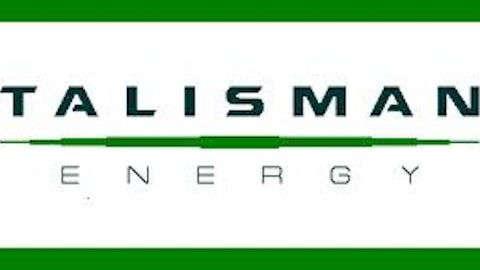
For those of you either in or approaching retirement, extra income could be an important part of a successful investment strategy.
There are some moves that can be made now to improve the chances of prosperity during the golden years.
They don’t include relying on increases in long-term interest rates based on potential actions by the U.S. Federal Reserve; hoping Congress ensures the viability of the Social Security system or trying to time the market.
They do include finding companies that have paid, and consistently raised their dividends over long periods of time. Past performance is no guarantee for the future, but those businesses that have a long history of increased payments will probably continue to do so unless fundamentals change significantly.
Most dividend growers have a few common characteristics:
1. Steady earnings growth,
2. Plenty of free cash flow from those earnings,
3. Providers of certain products that consumers need or want on a daily, weekly, or monthly basis (i.e. no cars, refrigerators, smartphones),
4. Low or moderate payout ratio (or the portion of earnings paid out as dividends),
5. Little or no debt.
I’ll examine several companies that have all or most of those traits.
Cleaning up
Many people buy deodorant, laundry detergent, paper towels, toothpaste, and shaving cream regularly. They are just some of the items provided by the world’s largest consumer products company, The Procter & Gamble Company (NYSE:PG).
Sales of those products have provided a steady stream of cash flow into the company’s coffers. Although growth has slowed somewhat lately, recent management changes are designed to reverse the trend. The board of directors recently brought back former CEO A.G. Lafley, who presided over the company during a solid growth phase, to take over again.
With a moderately low payout ratio (50%) and long-term debt ratio (32%), and lots of free cash flow ($3.1 billion last year), the company has all the ingredients in place to grow the dividend, which has been increased every year since 1956. The current dividend of $2.41 per year has risen at a compounded annual rate of 8.9% over the last five years, handily beating inflation.
Fill it up
In spite of calls from politicians and environmentalists to curb greenhouse gas emissions, consumers and businesses are going to need to buy gasoline for at least the next several decades.
Many people fill up their tanks on a weekly basis and the resulting sales provide a big windfall to major integrated oil and gas companies like Chevron Corporation (NYSE:CVX).
The California-based company has a low payout ratio of 27%, hardly any debt, consistent earnings growth (in spite of a slight slowdown this year), and plenty of cash that will allow it to keep increasing its dividend, presently at $4 per share. Since 2008, the payments have been growing at a rate of 8.4% each year. It has raised the dividend every year since 1988.
Chevron Corporation (NYSE:CVX) will also benefit from exporting liquid natural gas overseas to take advantage of relatively low domestic prices here.
I’m loving it
The fast food giant McDonald’s Corporation (NYSE:MCD) is another dividend grower to look at.
Customers have been flocking to the Golden Arches for many decades and buying boatloads of Big Macs, French Fries, and milk shakes.
That has allowed the company to increase its dividend each year since it initiated it in 1976. The current payment is $3.08 per share per year which has doubled in the last five years.
With a payout ratio of 55%, earnings are projected to keep growing (even though they have slowed a bit in the recent past) and with over a billion dollars in free cash flow, McDonald’s Corporation (NYSE:MCD) has ample room to keep the payments coming.
As a means of reviving growth, McDonald’s Corporation (NYSE:MCD) is in the midst of revamping its ad campaign and menu which are emphasizing the lower price dollar menu instead of the premium Extra Value meals. Preliminary indications are that the new focus is working so far.
I’d like to buy the world a Coke
Another dividend grower and maker of one of the most profitable products around is The Coca-Cola Company (NYSE:KO). The company has a presence in nearly every country. It is selling more than 500 different products right now and possesses one of the world’s most recognized brands.
The Coca-Cola Company (NYSE:KO)’s signature drink provided an operating profit margin of about 25% last year. The company sells millions of them and that generates tons of earnings and cash that are used to fund a healthy $1.12 dividend every year, and which has increased by 50% over the last five years.
The dividend is likely to keep growing since the payout ratio is reasonable at 55% and the company has a good balance sheet with long-term debt less than half of equity, regularly develops new products, and usually grows earnings every year.
Conclusion
For those investors that need dividends to supplement other forms of retirement income, looking at companies that use a tried and true formula for success that includes consistent earnings growth, lots of cash flow, lower payout ratios, and debt levels and products that consumers need regularly is a good starting place.
Companies like The Procter & Gamble Company (NYSE:PG), Chevron Corporation (NYSE:CVX), McDonald’s Corporation (NYSE:MCD), and The Coca-Cola Company (NYSE:KO) seem to have mastered the equation pretty well.
The article 4 Suggestions for Dividend Growers originally appeared on Fool.com and is written by Mark Morelli.
Mark Morelli owns shares of Coca-Cola, McDonald’s, and Procter & Gamble. The Motley Fool recommends Chevron, Coca-Cola, McDonald’s, and Procter & Gamble. The Motley Fool owns shares of McDonald’s. Mark is a member of The Motley Fool Blog Network — entries represent the personal opinion of the blogger and are not formally edited.
Copyright © 1995 – 2013 The Motley Fool, LLC. All rights reserved. The Motley Fool has a disclosure policy.





